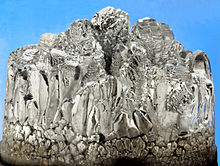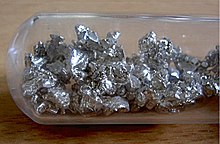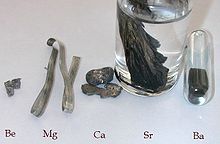Alkaline earth
| ||||||||||||||||||||||||||||||||||||||||||||||||||||||||||||||||||||||||||||||||||||||||||||||||||||||||||||||||||||||||||||||||||||||||||||||||||||||||||||||||||||||||||||||||||
| IUPAC Group | 2 | |||||||||||||||||||||||||||||||||||||||||||||||||||||||||||||||||||||||||||||||||||||||||||||||||||||||||||||||||||||||||||||||||||||||||||||||||||||||||||||||||||||||||||||||||
| Grupo nomenclatura CAS | IIA | |||||||||||||||||||||||||||||||||||||||||||||||||||||||||||||||||||||||||||||||||||||||||||||||||||||||||||||||||||||||||||||||||||||||||||||||||||||||||||||||||||||||||||||||||
| Elements | ||||||||||||||||||||||||||||||||||||||||||||||||||||||||||||||||||||||||||||||||||||||||||||||||||||||||||||||||||||||||||||||||||||||||||||||||||||||||||||||||||||||||||||||||||
|---|---|---|---|---|---|---|---|---|---|---|---|---|---|---|---|---|---|---|---|---|---|---|---|---|---|---|---|---|---|---|---|---|---|---|---|---|---|---|---|---|---|---|---|---|---|---|---|---|---|---|---|---|---|---|---|---|---|---|---|---|---|---|---|---|---|---|---|---|---|---|---|---|---|---|---|---|---|---|---|---|---|---|---|---|---|---|---|---|---|---|---|---|---|---|---|---|---|---|---|---|---|---|---|---|---|---|---|---|---|---|---|---|---|---|---|---|---|---|---|---|---|---|---|---|---|---|---|---|---|---|---|---|---|---|---|---|---|---|---|---|---|---|---|---|---|---|---|---|---|---|---|---|---|---|---|---|---|---|---|---|---|---|---|---|---|---|---|---|---|---|---|---|---|---|---|---|---|---|
The alkaline earth metals are a group of elements that are located in group 2 of the periodic table and are the following: beryllium (Be), magnesium (Mg), calcium (Ca), strontium (Sr), barium (Ba) and radium (Ra). The latter is not always considered, as it has a short half-life.
The name "alkaline earth" comes from the name given to their oxides, "earths", which have basic (alkaline) properties. They have an electronegativity ≤ 1.57 according to the Pauling scale.
Alkaline earth metals are harder than alkali metals, have a luster, and are good electrical conductors; less reactive than alkalis, good reducing agents and form ionic compounds. They all have two electrons in their outermost shell (valence electrons).
Features
- They have an electronic configuration ns2.
- They have low ionization energy, although greater than the alkaline of the same period, much less if they descend into the group.
- Except for beryllium, they form clearly ionic compounds.
- They are low-density, coloured and soft metals.
- The solubility of its compounds is much lower than its corresponding alkaline.
- All have only two electrons in their outer energy level, with a tendency to lose them, on their side with what form a negative ion.
- They all have as valence +2.
- They behave like alkaline and teaser at the same time.
Reactions
- They react easily with halogens to form ionic salts.
M + X2 —> MX2 Example: Ca + Cl2 → CaCl2
- Calcium chloride anhydride is a hygroscopic substance used as a desiccanant
Reaction with Oxygen to form oxides just like alkalis. Ca + 1/2 O2 → CaO Mg + 1/2O2 → MgO
With Hydrogen they form salts that are very soluble in water
Ca + H2 → CaH2
Ca, Sr, and Ba readily react with water to form hydroxide and hydrogen gas. Be and Mg are passivated by an impermeable oxide layer. However, amalgamated magnesium will react with water vapor.
Mg + H2O → MgO + H2
Not surprisingly, water hardness is based on these properties.
Alkaline earth metals, obtaining and applications
- There are two fundamental methods of obtaining:
- Electrólisis of its melted haluros:
MX2(l) —> M(l) + X2(g).
- Reduction of their carbon oxides:
MO(s) + C(s) —> M(s) + CO(g)
- The Berilio is used in nuclear technology and low-density alloys, high solidity and corrosion stability. It is also used as a p-type doping for some semiconductors.
- Magnesium has been widely used in the industry with a structural role to the extent that its properties in this area are better than those of aluminum; however, its use has been reduced due to the risk of inflammation it presents. It often flies with aluminum or zinc to form materials with interesting properties.
- Calcium acts as a reducing agent in the separation of other metals from its minerals, such as uranium. It is also linked with other metals, such as aluminum and copper, and can be used for the deoxidation of certain alloys or in the production of mortar and cement.
- The strontium and the barium have less applications than the lighter alkalinetheran metals. SrCO strontium carbonate3 is used to produce red fireworks, while pure strontium is used for neurochemical studies. While the barium is used to create a vacuum in electron tubes mainly.
Hellenistic Importance
Alkaline earth metals have a very variable biological role, some are essential, others highly toxic or even indifferent:
Beryllium is sparingly soluble in water, is very rarely present in living cells, and has no known biological role.
Magnesium and calcium, on the other hand, are widely present in all known living organisms and play a vital role. For example, magnesium acts as a cofactor in many enzymes, and calcium salts play a structural role in vertebrate bones and mollusc shells.
Concentration gradients of magnesium and calcium ions across cell or intracellular membranes (envelope organelles) are regulated by ion pumps that interact with several fundamental biochemical processes.
Strontium and barium are quite rare in the biosphere and therefore have a marginal biological role. However, strontium plays an important role in marine animals, particularly coral, where it participates in the synthesis of the exoskeleton.
Contenido relacionado
Nitrogen(II) oxide
Amylopectin
Nicolas LeBlanc






